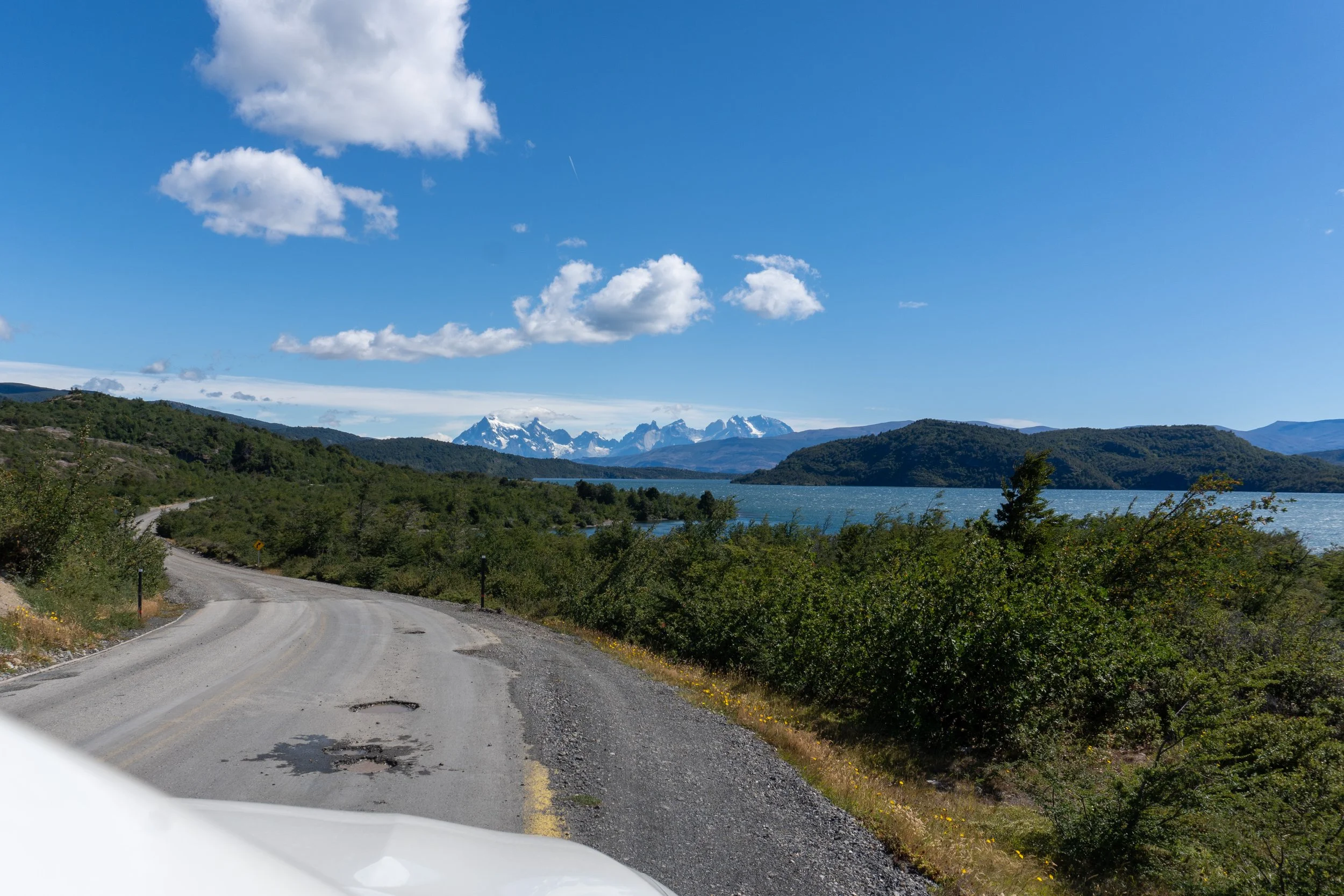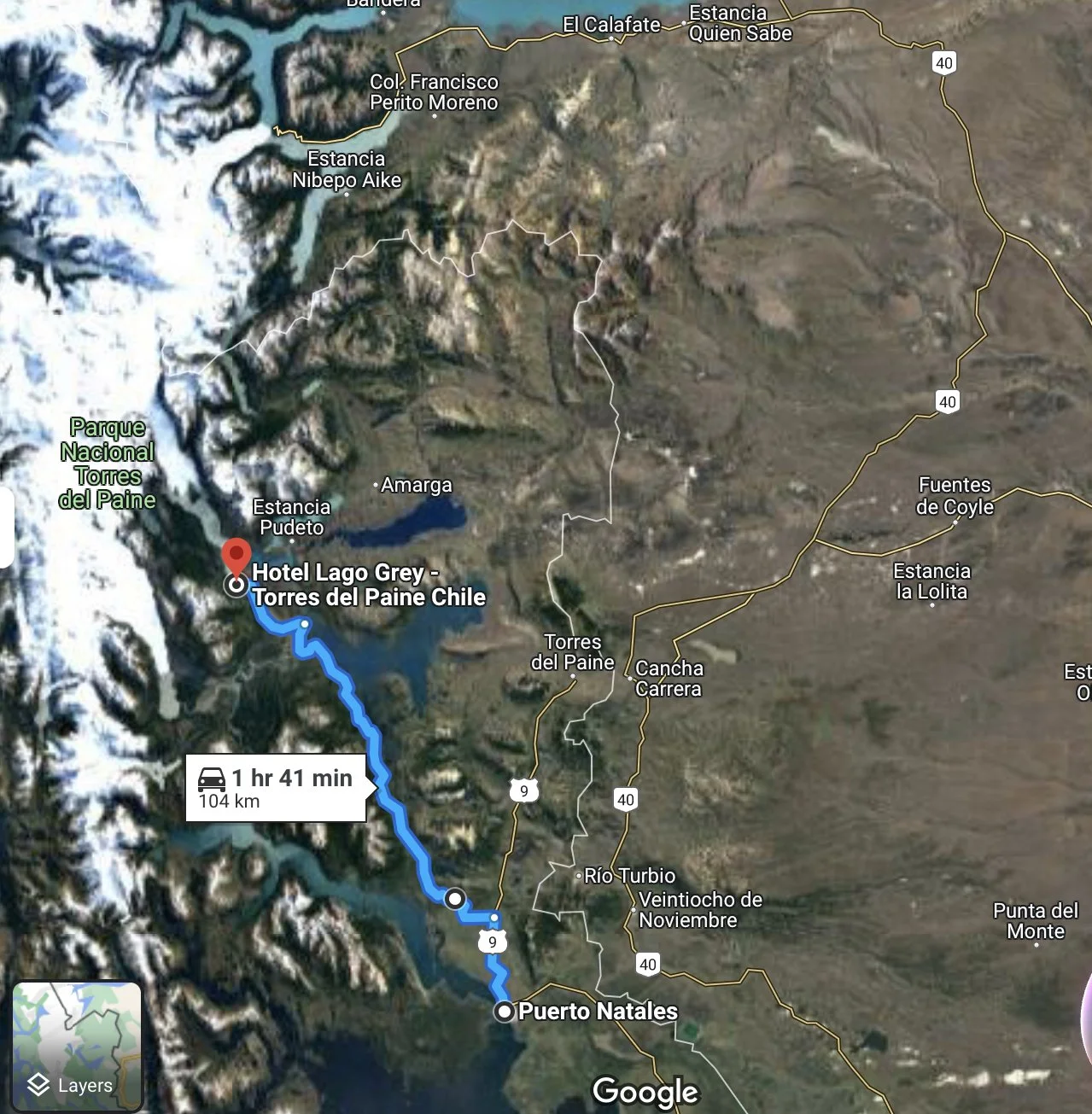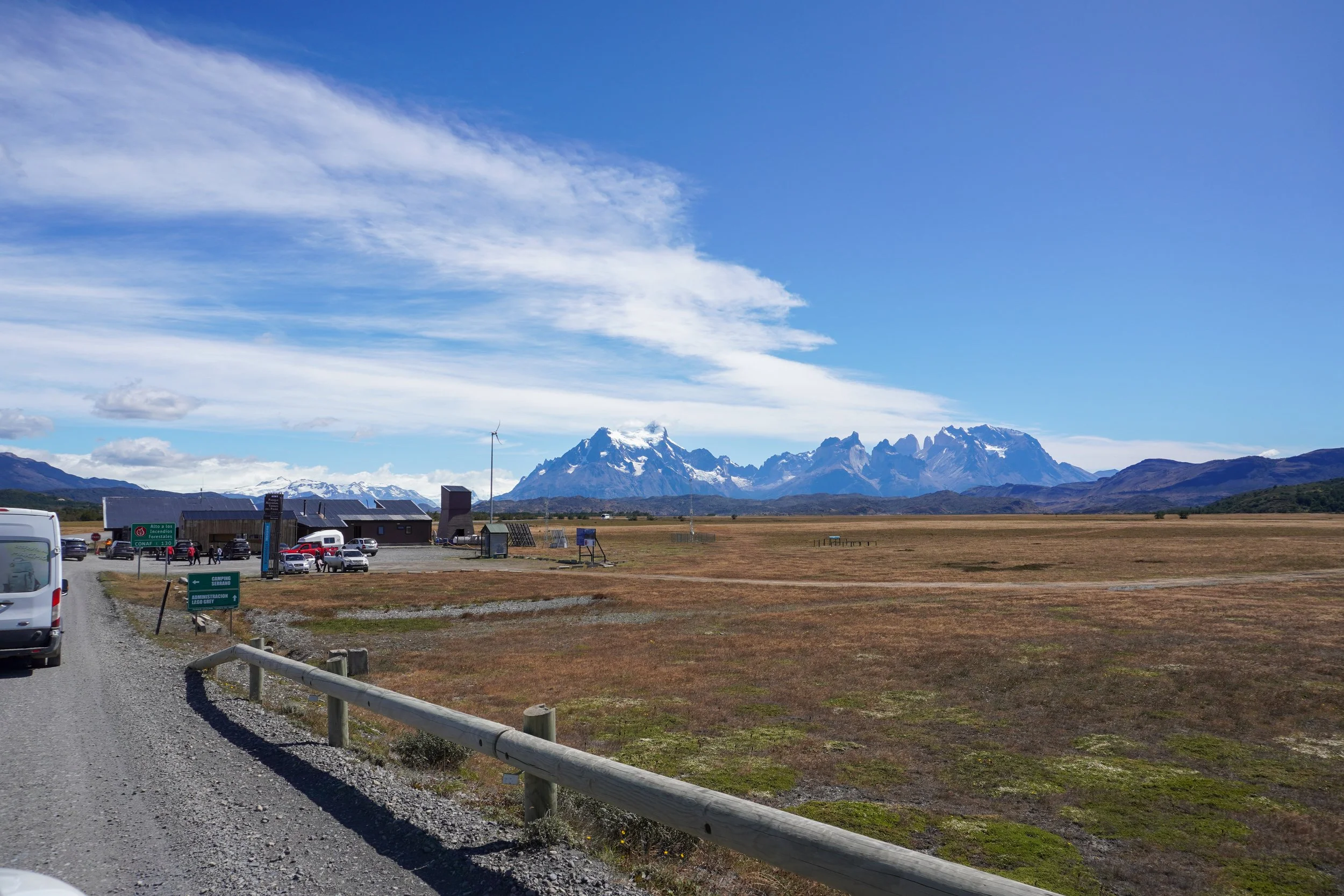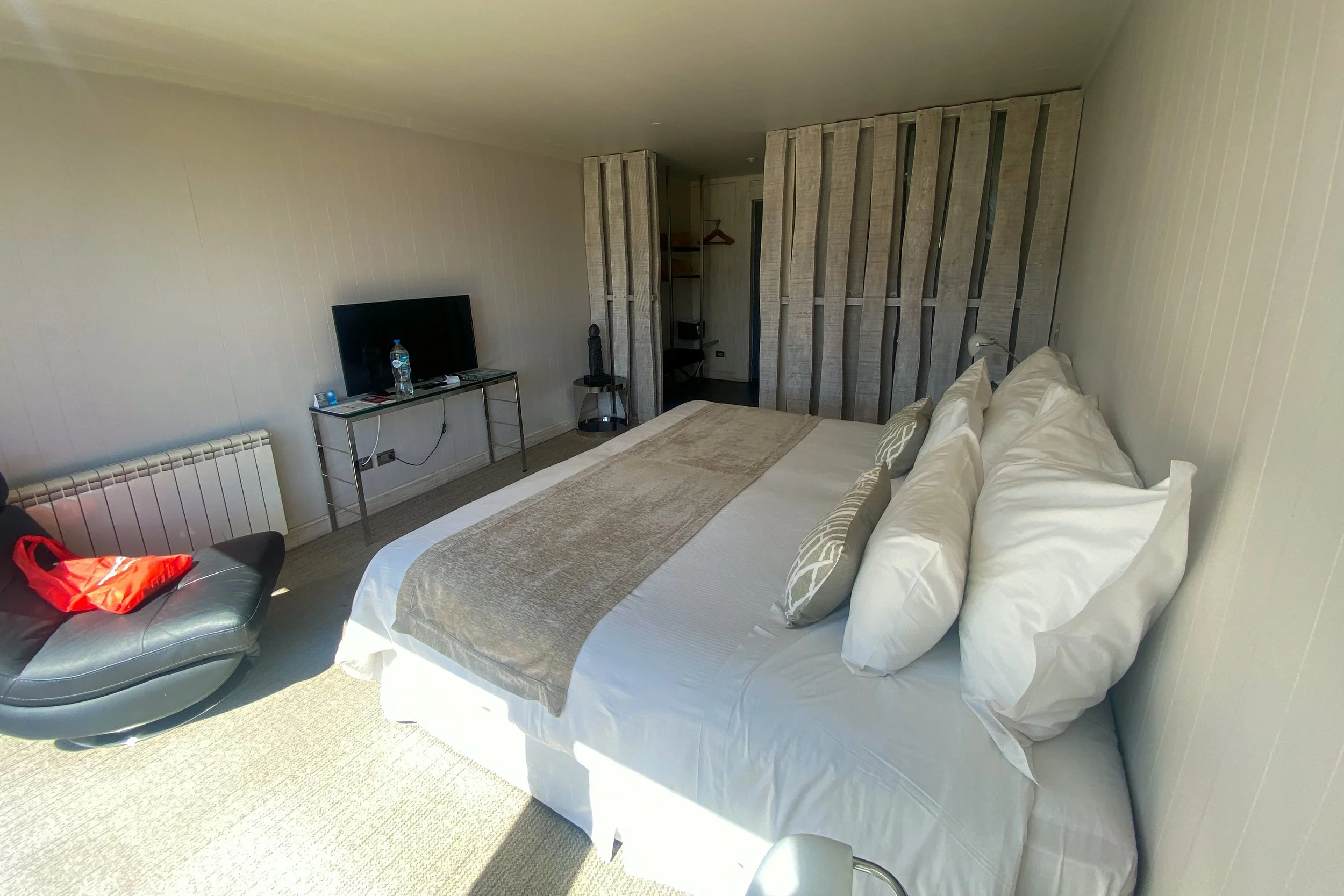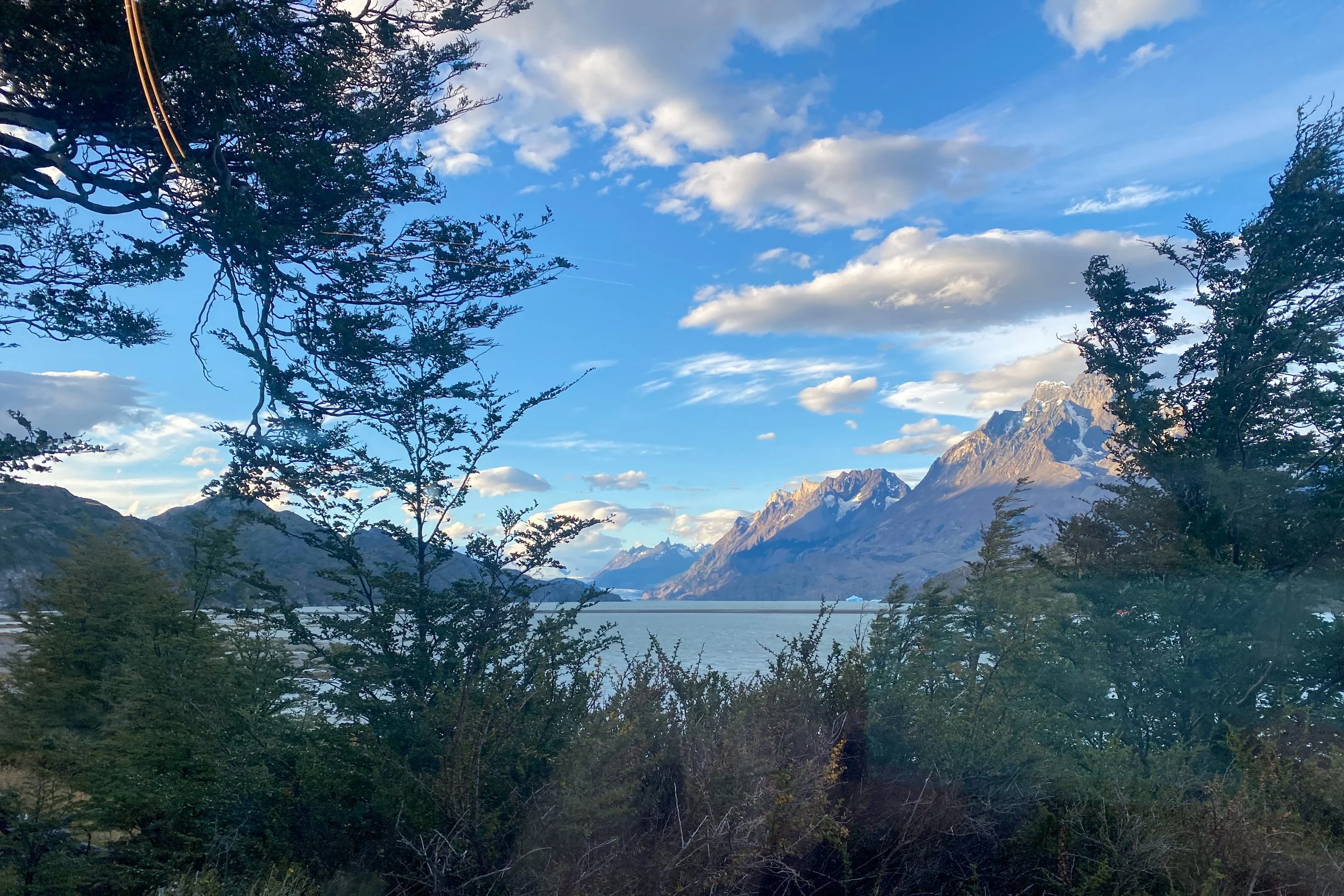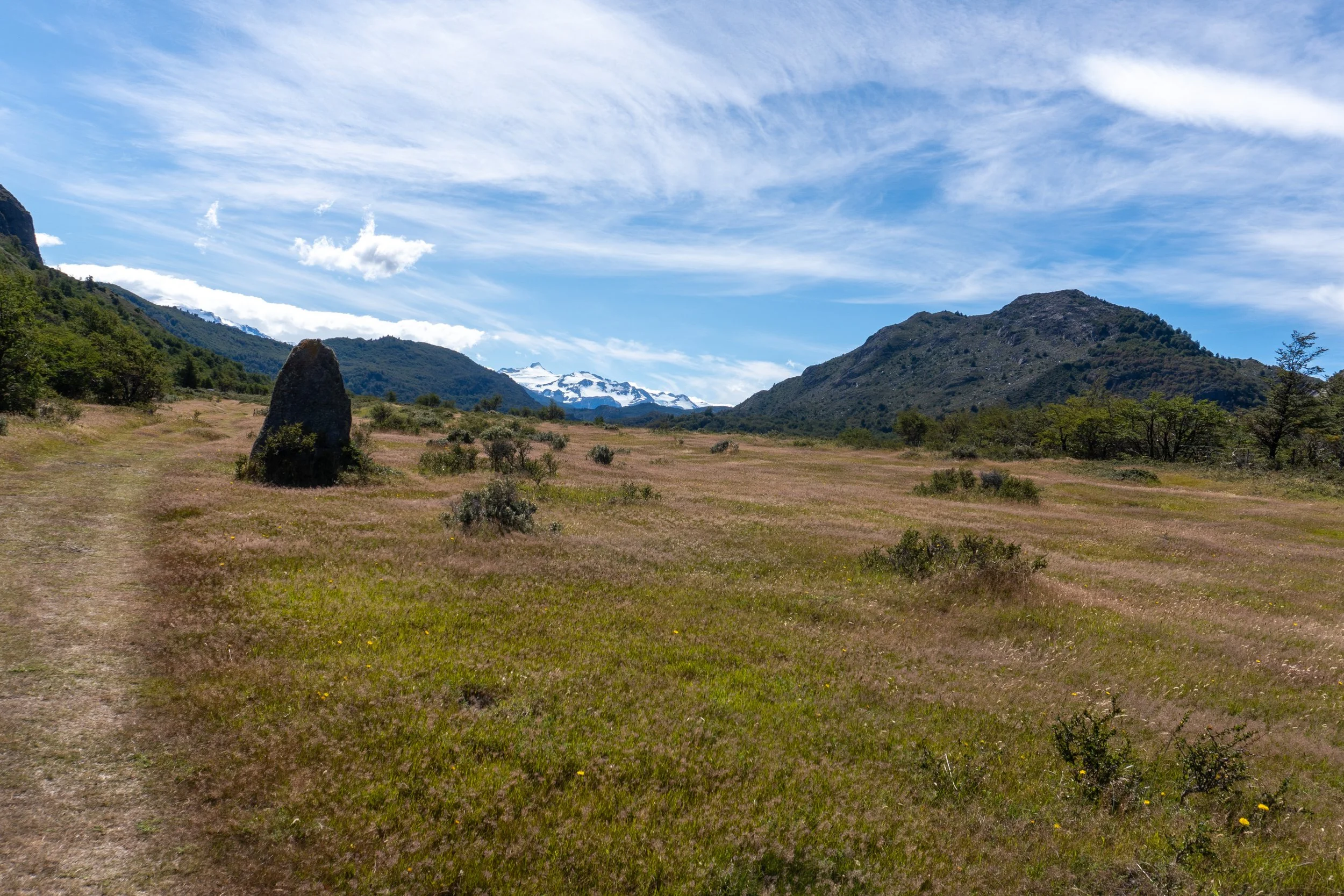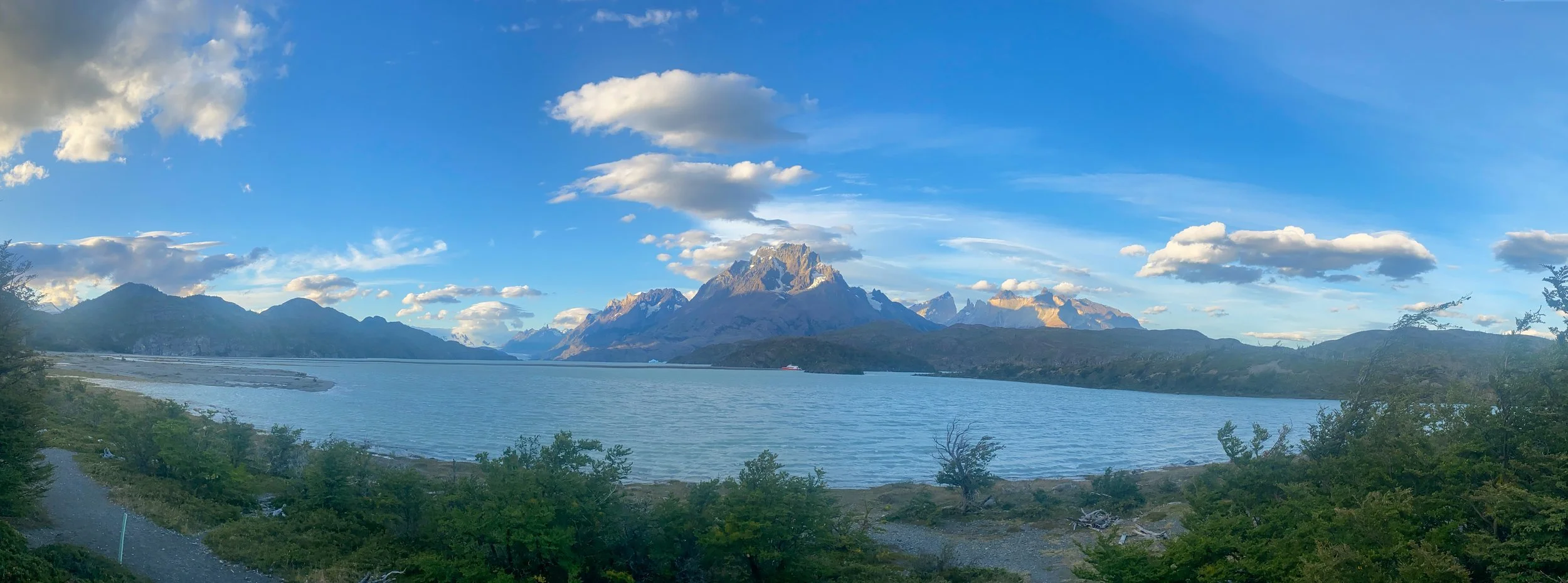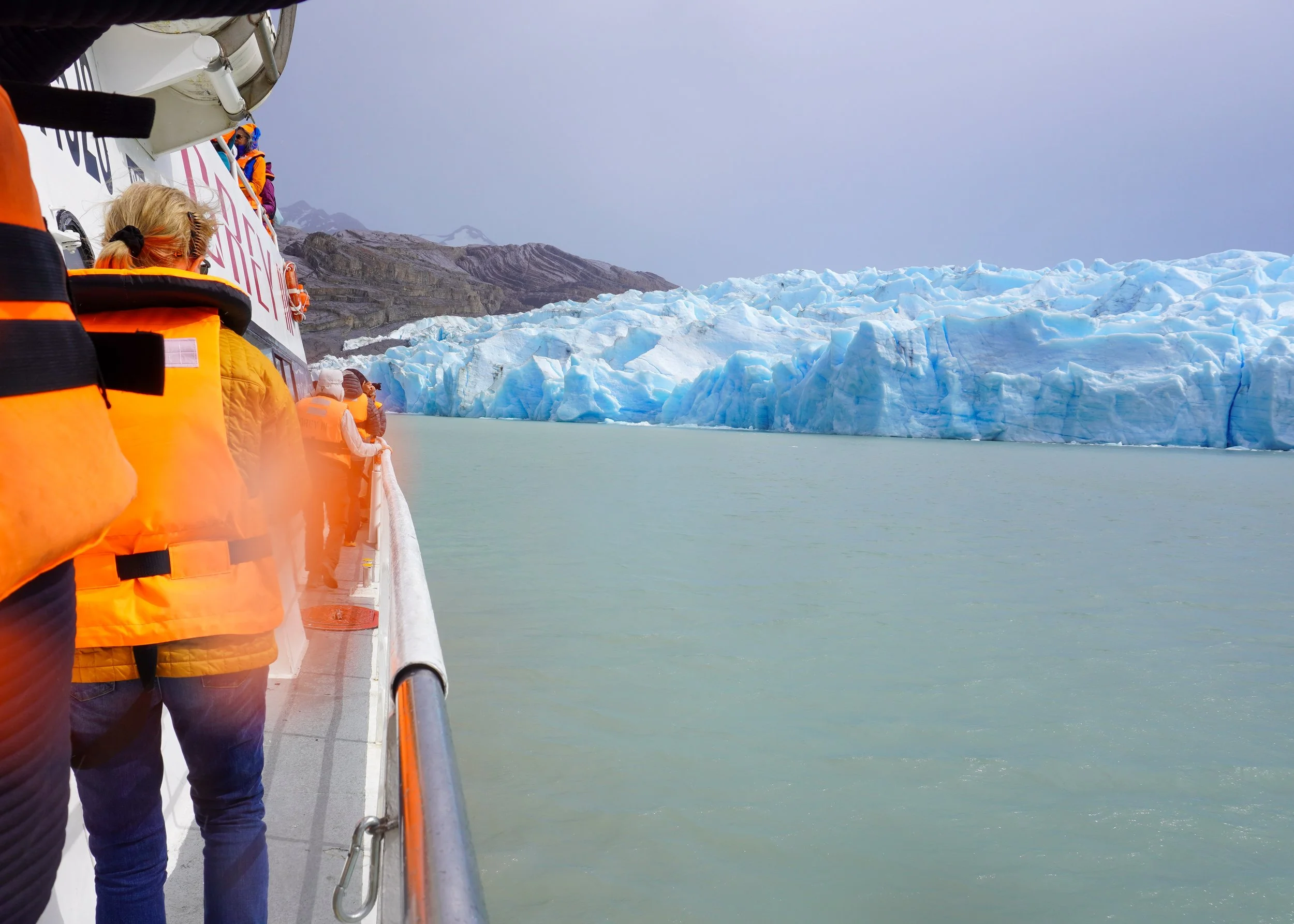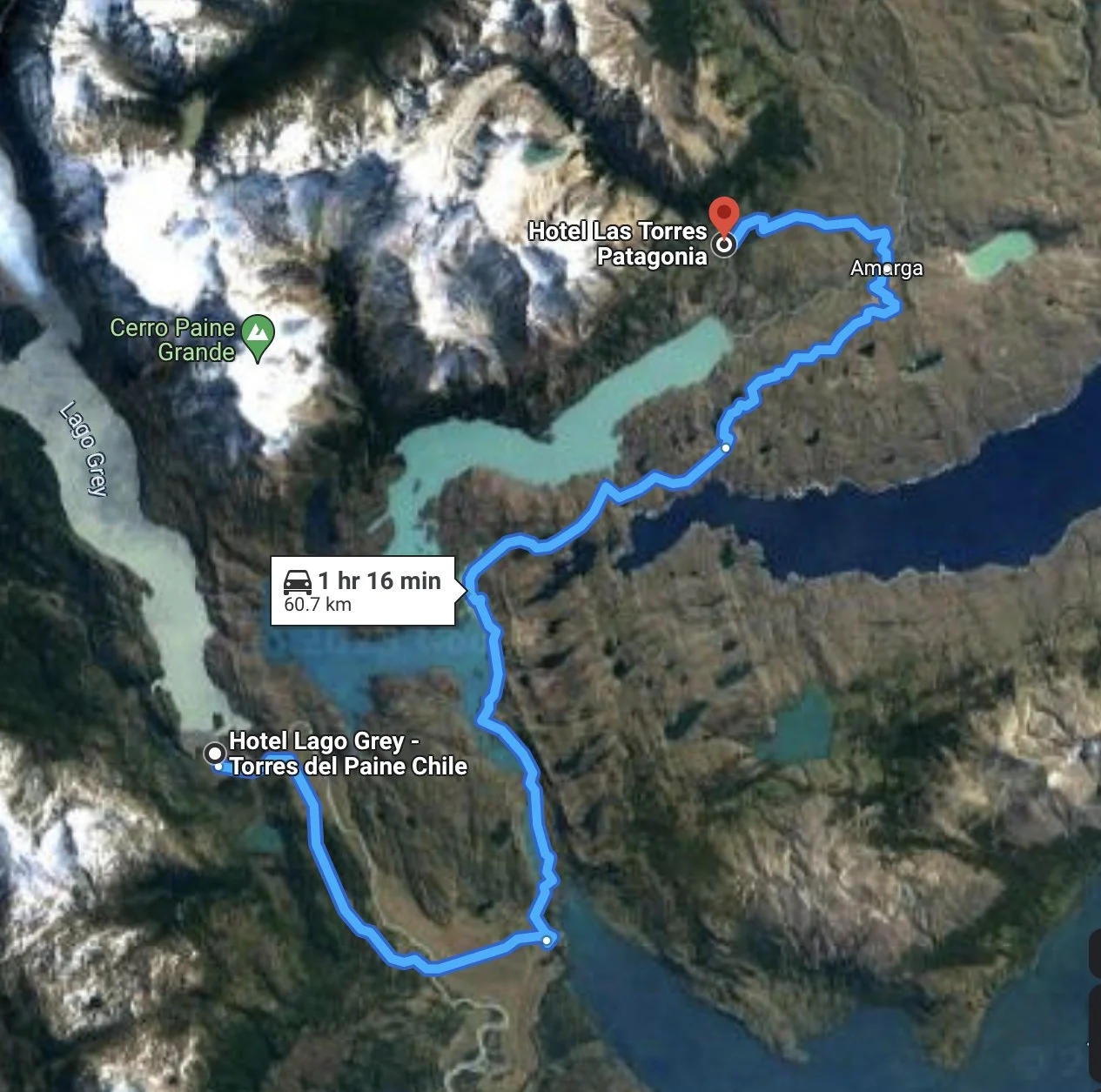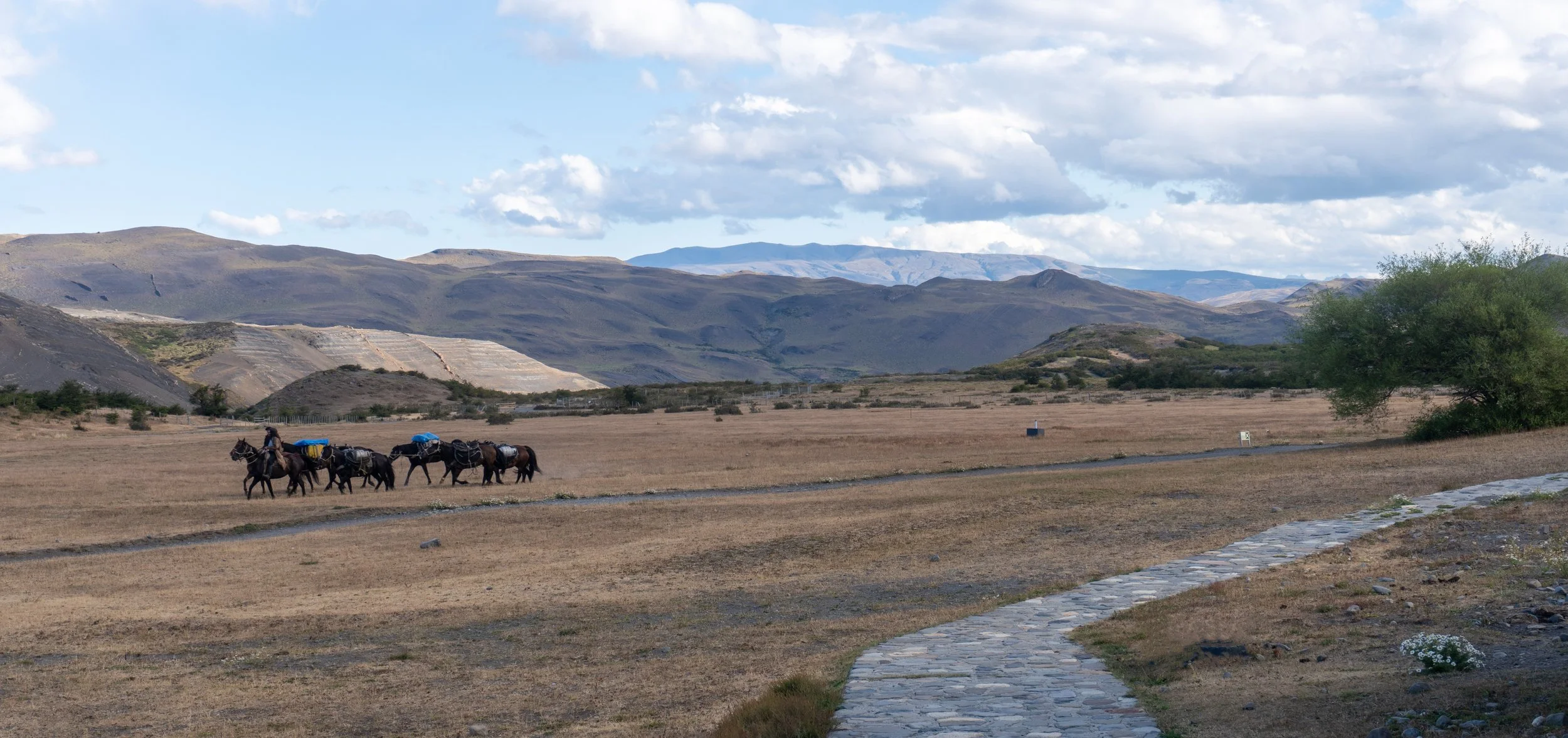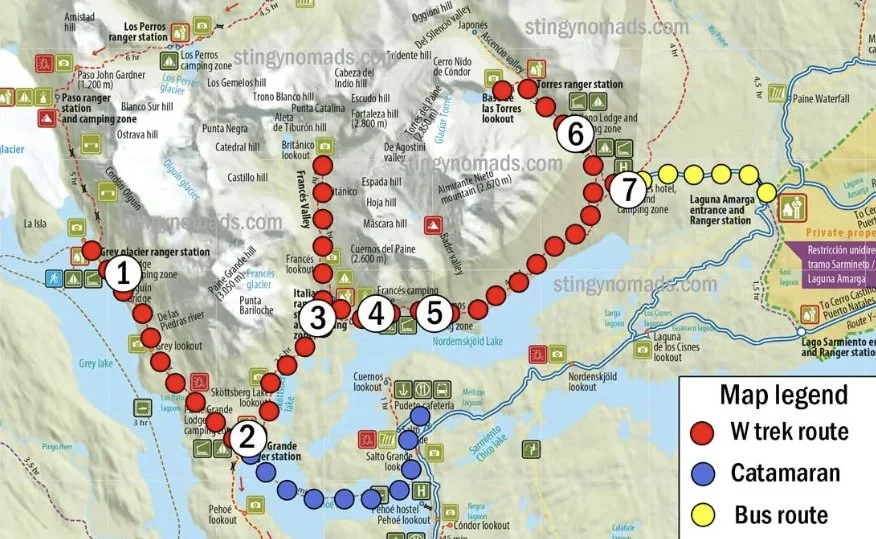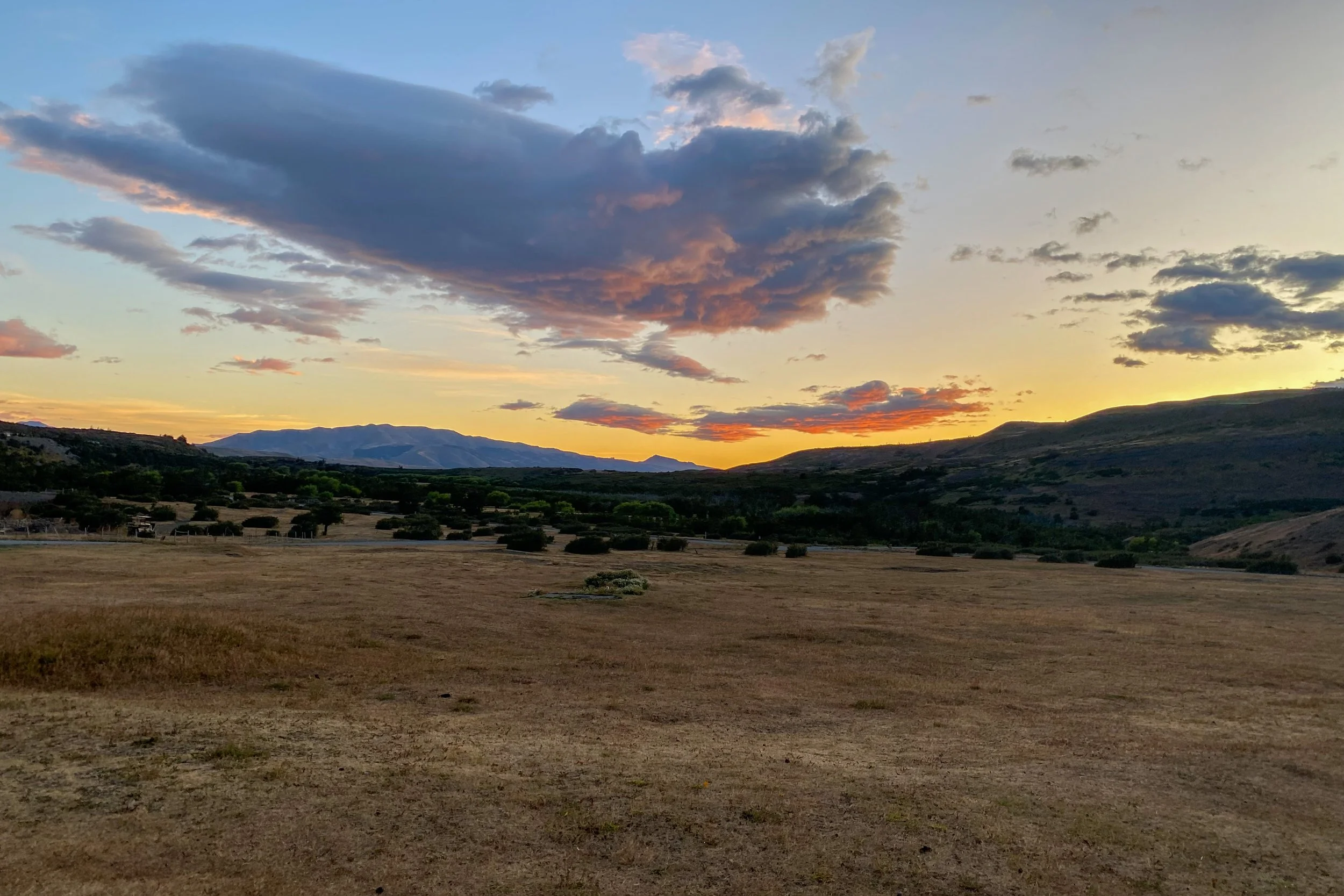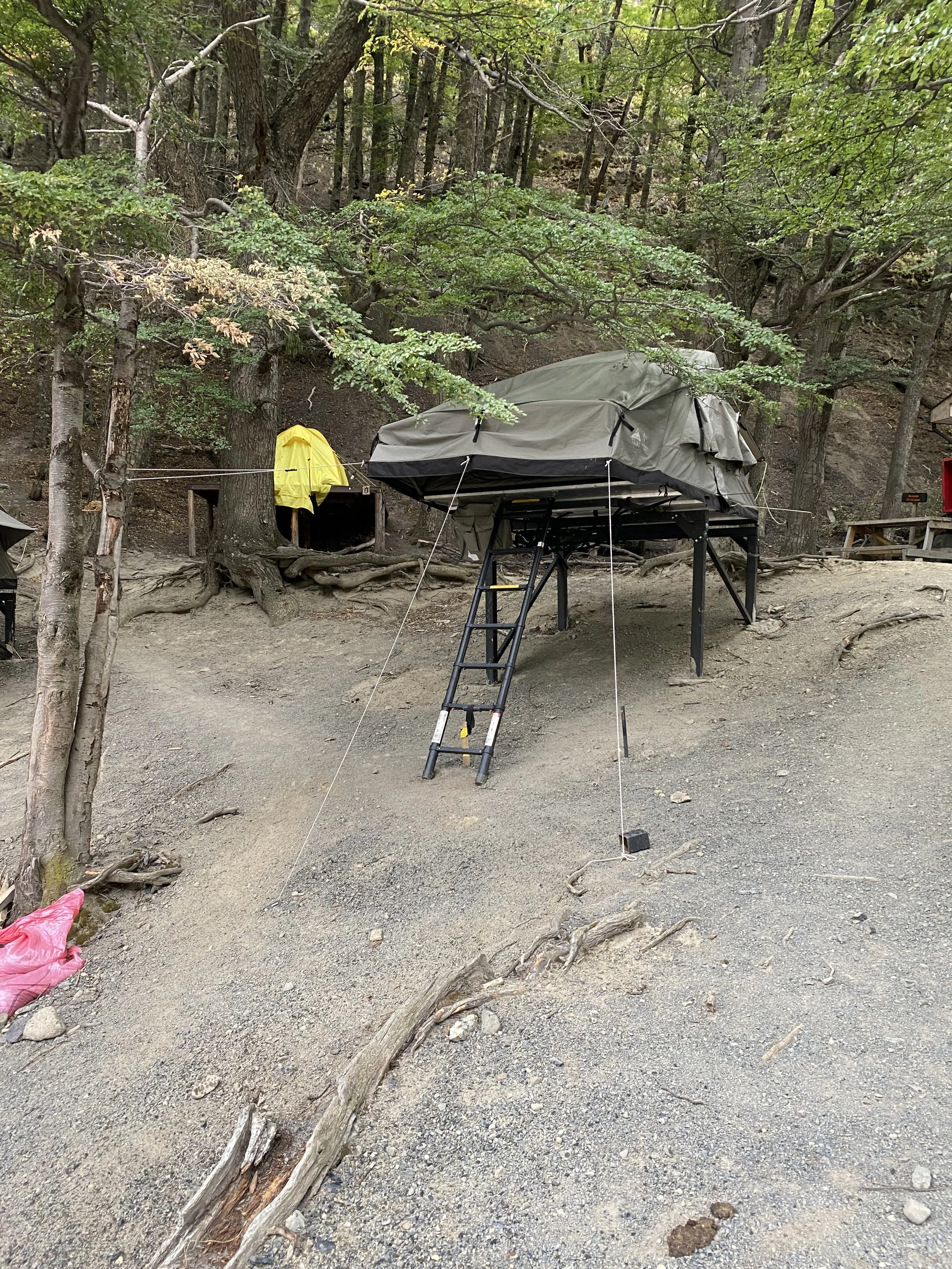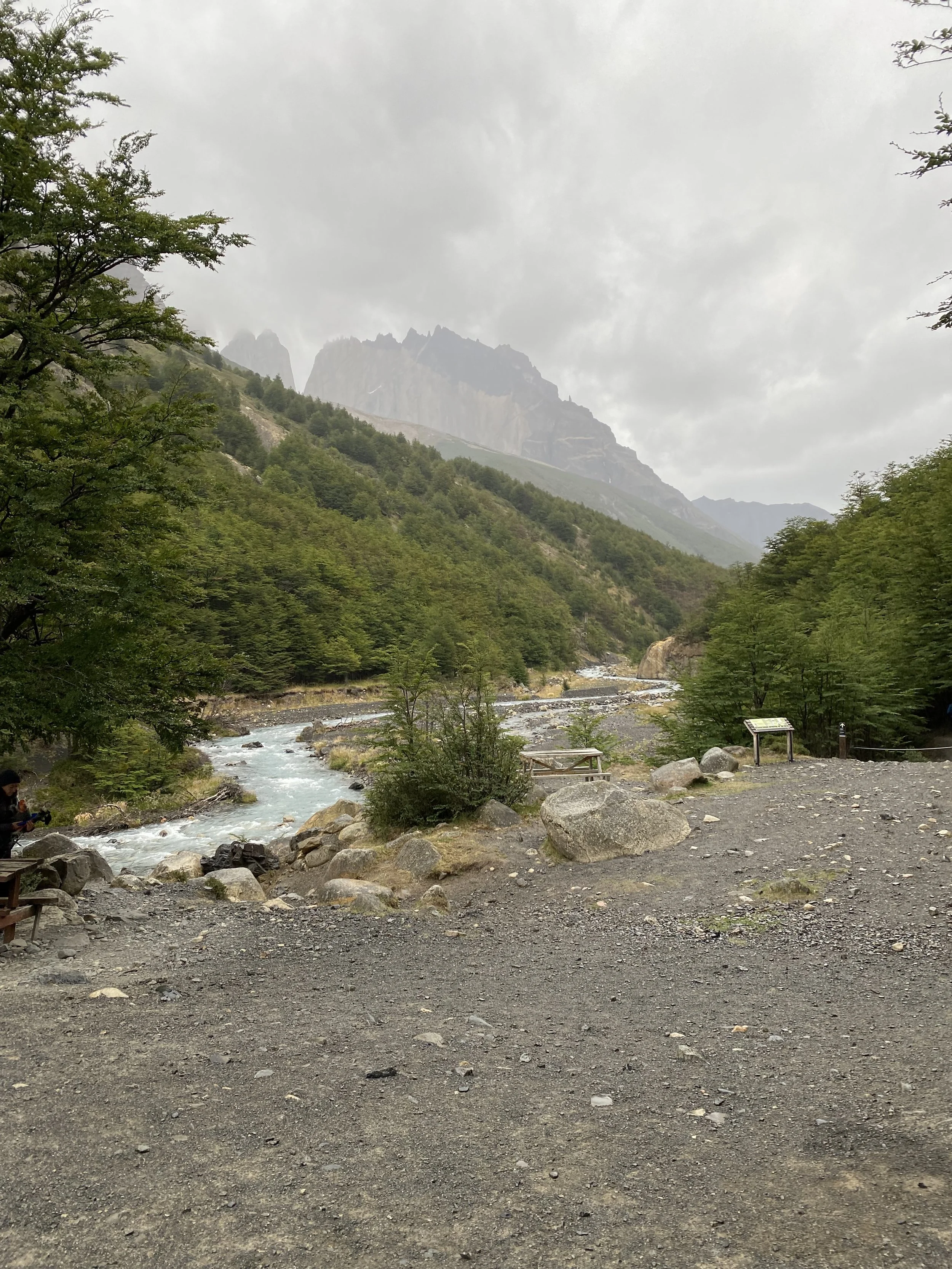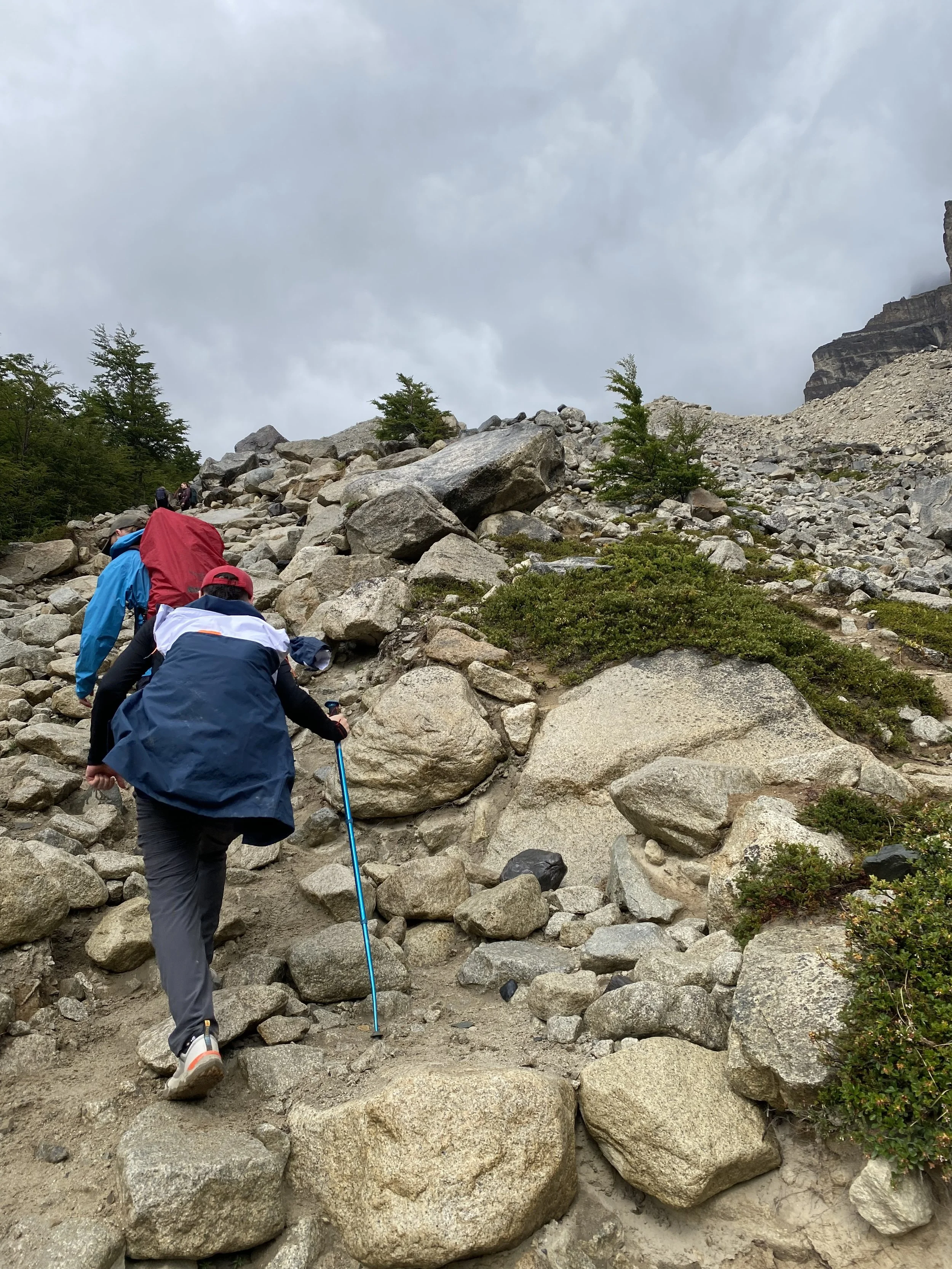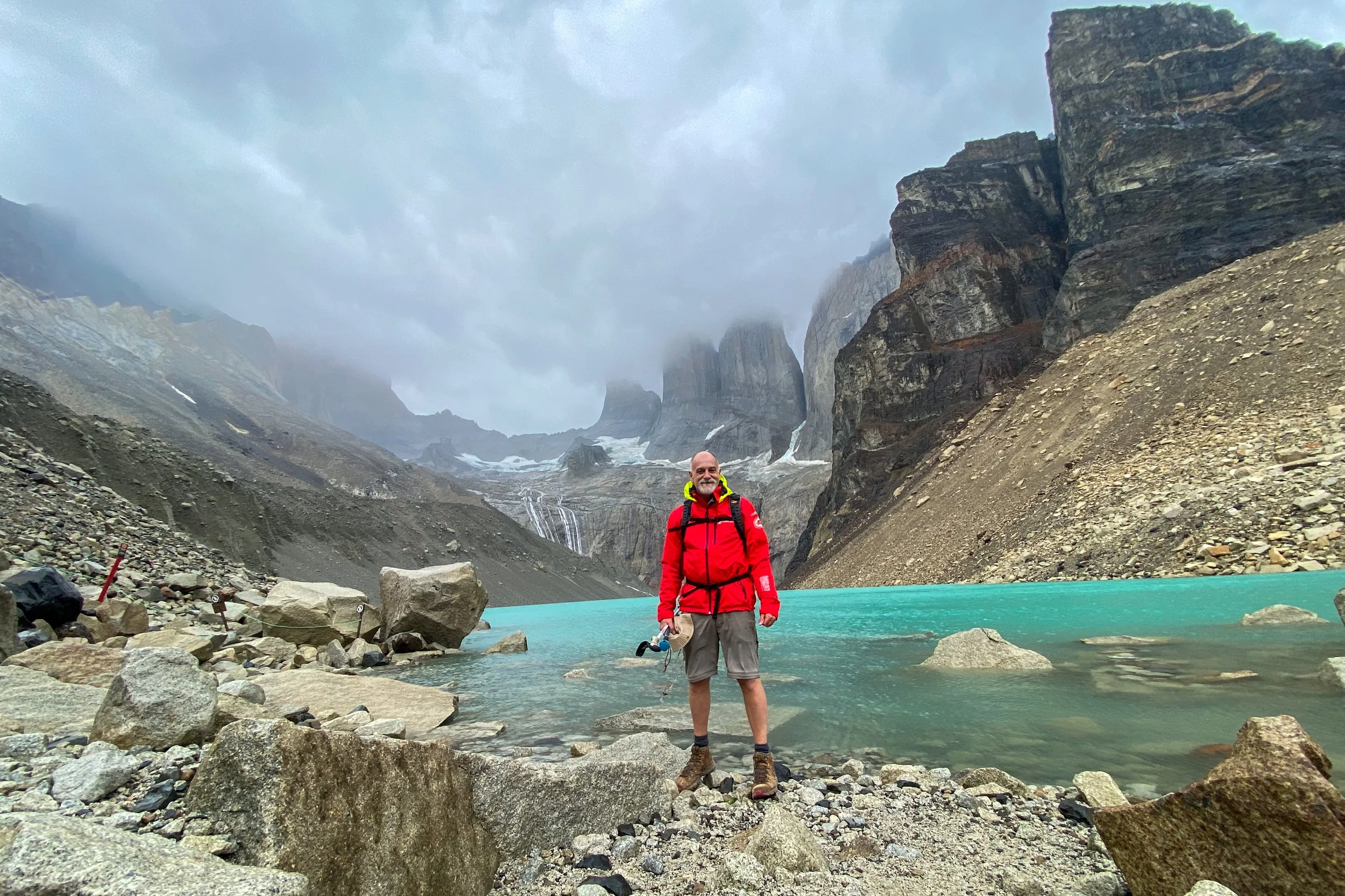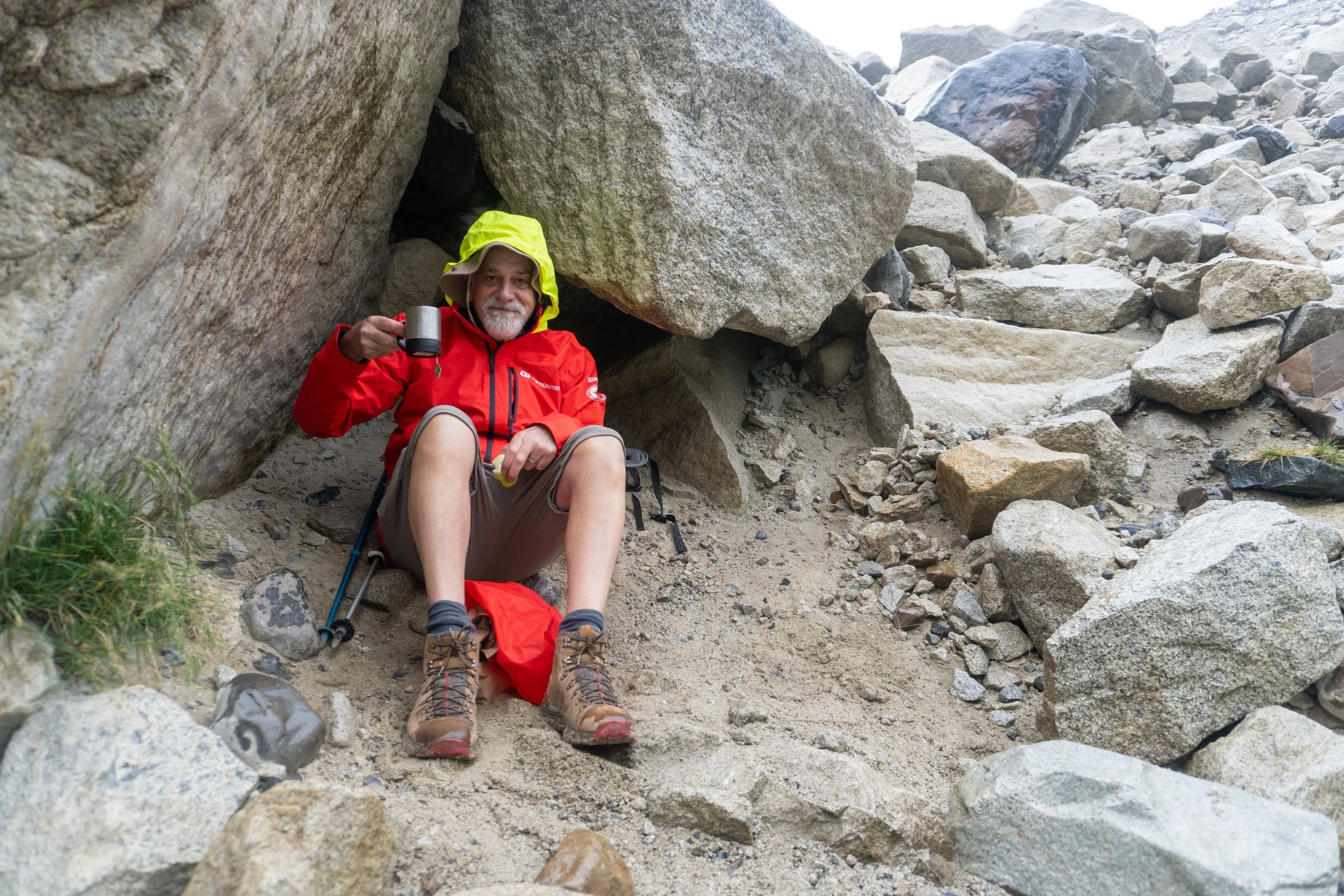Torres Del Paine
Days 22 - 24 2nd to 5th February
If you know Pauline, then you will know that the thing that makes her most anxious is the prospect of running out of fuel miles from anywhere. Ed, our travel agent, either didn’t know this or has a malicious streak in his DNA. Just before we landed in Ushuaia from our Antarctic expedition, he had sent us a cheery email wishing us happy travels through Patagonia oh and by the way, there is currently a major fuel shortage in the areas that you will be in and ‘ I would suggest getting a Jerry can but it is illegal to take one over the border’. Cheers Ed, I’ve now had five days of angst trying to convince my wife that everything is going to be just fine.
The build up to the moment of picking up the car was tense and it was a huge relief when the man at Europcar said that whilst it was illegal to take any fuel over the 🇨🇱/ 🇦🇷 border, it was ok to take any empty Jerry can. Phew! We nipped round to the Copec petrol station and stowed a full 20 litre bright red fuel can into the boot and then fretted for the next few days about whether or not the nozzle would work properly when we came to transfer it into the petrol tank… We also needed to work out a careful strategy for dealing with my paranoia about being caught at the border with illegal substances.
Shake rattle and roll - We’re all shook up
Google Maps advises that there maybe some sections of unpaved road on our road trip day one route but absolutely fails to take this into account in the journey time.
We had already been on some dodgy roads during our bus journey yesterday but nothing quite prepares you for the actual business of driving a vehicle yourself. We soon establish that there are four main types of road surface:
Nice concrete paved roads which are generally way better than most roads in the UK and a pleasure to drive on.
Once nice concrete paved roads that are now riddled with pot holes. There isn’t much of a grading between road types 1 and 2 so we figure that they must just change from one to the other very suddenly. The potholes are so large that I’m sure some have stuck cars lurking at the bottom of them. Sometimes it’s impossible to detect where one pot stops and another one starts to the point where the road looks more like a war zone than a driving surface.
Crushed gravel roads referred to as ‘washboard’. These are bone shakers but not unreasonable to drive on at around 40mph
Once washboard roads that have mostly washed away leaving only huge potholes and large boulders. Unlike the concrete roads, there is a huge range of grades between types 3 and 4 that can all exist in a very short section of road. This can easily catch you out as driving at 40mph on a type 4 road is pretty suicidal!
Having established the types of roads available, we then fall into a rhythmic pattern of how each type is dealt with:
It’s really easy driving along these roads and you can go for miles and miles at 65m/h without seeing anything other than some wild ostriches or Guanaco. When this happens, Pauline shouts at me to slow down and to put the hazards on. Most of the locals do this except for one guy who flew by at high speed beeping his horn. He had a 90 sign on the back his car. I guess that this indicated a minimum speed 🤔
If I’m driving then Pauline shouts at me to slow down whilst I skilfully avoid the worst of the craters. If Pauline is driving, she becomes expert at scoring pothole bullseyes whilst I lurch around in the passenger seat exaggerating each impact!
Pauline generally drives on these roads otherwise we would be cleaning sick from the footwells whilst she map reads. We learn from the host at one of our stays that where these surfaces exist on the main roads, it’s either because the government has run out of money or the contractor is in prison for embezzling the government’s money.
If I’m driving then Pauline shouts at me to slow down whilst I skilfully avoid the worst of the craters. If Pauline is driving, she becomes expert at scoring pothole bullseyes whilst I lurch around in the passenger seat exaggerating each impact! Either way, it is pretty tiring work having to constantly focus on the stones ahead trying to gauge which one might rip the sump from the bottom of the car. Progress is often reduced to 10m/h.
Luckily, so far at least, our car seems to be designed for continuous pot holing as it wobbles and sways through the rough terrain with little more than a reassuring clunk of the jack saying ‘I’m here if you need me’ and the steady judder of the steering wheel.
We reach the entrance to the park in around double the time that Google suggests as we get tantalising close to the already impressive Las Torres mountain range.
Ed has advised that it was best to pay for the entry fee on line before arriving here (28$US each). Due to lack of decent Wi-Fi in the ranch that we had just stayed at in Puerto Natales, we hadn’t done this so instead had to work out what was going on at the ticket office. It quickly became clear that the big advantage of prepaying was that you didn’t have to gamble on whether there was any power at the park entrance. They didn’t accept cash so we had to wait until someone went and kicked the solar panel into life so that the card machine worked. Luckily it did as the alternatives were either to ram through the gate and high tail it down the type 3.5 road at 20mph or take a massive detour back the way we came and round to the other entrance some three hours drive away and hope that the power was working there.
Doubts about what we might find at the end of road at Lago Gray in terms of a quality hotel dissipated once we had got to our room, saw how well fitted out it was and took in the amazing view of the mountains through the window.
There was still plenty of daylight hours left so we found an easy trail near to hotel to walk on and soon found deserted paths through beautiful rambling countryside.
Back at the hotel in the evening the atmosphere was less exclusive with nothing in the way of alternative accommodation or dining offerings for many miles except for some hippy campsites with campfires for cooking up vegan ready meals. We ate in the restaurant.
Considering the captive audience and the opportunity to serve up school dinners at exorbitant prices, the food was very good even though the starter that I ordered stayed in the kitchen and I was served something that they must have had an excess of. They couldn’t quite bring themselves to be reasonable on cost though and when the bill came it was confirmed to us that Chile is a way more affluent country than Argentina.
The view from the hotel veranda though was priceless and changing colours of the mountains in the evening light breathtaking.
The god of smug came to repay our glib disregard of his true power when we foolishly booked the Uber expensive and utterly crap boat trip to the glacier for the next morning. £85 a head for a 40 minute March across a man made shingle bar across the lake (shame on them) to a beaten up old tug that would the Marchioness look like a vessel that could take on Drake Passage followed by an hours slog against the wind across a grey lake choked with floating minerals that denied any life below its surface to see, in the scheme of things, a miserably insignificant glacier in the rain. It was made worse by the fact that Big Camera’s twin brother had found his way on board to make sure that every possible photo shooting angle was obscured. By him! I had to retreat to the interior when I heard one sage proclaiming ‘it’s beautiful but at the same time a tragedy of global warming’. Not saying I’m an expert but I’m pretty sure that one of the definitions of a glacier is that it moves and bits fall off at the end of the journey🧐
Later that afternoon we were off again to a new hotel for a two night stay. The road was a pretty good type 3 all of the way but it still took a good hour more than predicted. We did wonder why we were staying somewhere else so relatively close but talking to some people at breakfast, we were told that Las Torres was unmissable and that it was best to stay as near as possible to the peaks that we had been admiring from a distance for the last few days.
More breathtaking views en route to Hostería Las Torres. Spot our car on the left of the first picture. Feel free to print out both panos and join them together to make a 270° view.
Signposts are scarce in these parts and for a while we wondered whether or not we had taken the right road, especially when we arrived at a locked gate blocking any further progress. However, a nice man came out and checked our name against his list and we were let into the private section of land within the National Park in which the hotel was situated.
Once again, the setting for the hotel was spectacular and for the added touch of the Wild West, they laid on some horses coming home from a long days ranching.
Sadly though, the owners of this establishment appeared to care little about delivering quality and were more about getting the most money possible from their captive audience. Everything was more expensive than anything we had experienced to date with the most extreme example being the set menu school dinners for 45$US per head! The service was as bad as you’d expect from a set of employees that all get sacked at the end of each high season and utter confusion reigned at dinner with misplaced orders and at one point, our cutlery for mains being removed straight after we had finished the starter with someone coming up with desserts moments later. When we did eventually get the main course in the right order we rather regretted not taking up the earlier offer of skipping it. The 🦙 stew probably needed another couple of days of cooking to soften up the meat. Think that we will be leaving our furry friends to roam free for the rest of the holiday…
Hikers travel from all over the world to come here to take on the 100 mile long Big W trek shown in red on this map. Super keen (aka bonkers) athletes will try to complete this in 24 hrs but most take three to four days. Picking out the difference between those that are here for a short stroll in the sunshine and the hardcore taking on the whole route is extremely easy and if you can’t see the difference, there are plenty of olfactory clues as well.
One of the most visually rewarding sections of the walk is to the lake at the base at Las Torres starting at number 7 on the map and this is the one that I wanted to do. It is a 22km round trip from the hotel and includes a lot of scrambling over rocks particularly in the last section before the lake. Pauline would not be joining me and insisted that I paid for one of the guides at the hotel. At first I was sceptical of the value in this as I knew that the route would be clear and that there would be plenty of people on it without guides. However, I knew that I had no real choice in the matter as without a guide, I would be bound to have some sort of life threatening accident because that’s what I’m really good at doing!
So on our second day at Las Torres I got up early to get breakfast before meeting my guide to start the 14 miles walk that was due to take around eight hours. Sebastian was waiting in reception all with the two other walkers in our group, a couple in their late 20s from Uruguay. We set off with our enormous packed lunches stowed away in ruck sacks and a load of water.
After around an hour and a half of steady incline we reach the Ascencio Valley.
Sebastian is 28 and is from Santiago Chile and he has a very large beard! His father is an architect and comes from Italy whilst his mother is Spanish and works with the Jesuit church. This is Seb’s second season at Las Torres and he has a lot of things to say about the management of the hotel and, once he learns that I have spent a little bit of my career working on hotels, we chat about all of things that could be made better. He confirms that all of the stuff are sacked at the end of each season and whilst employed, they are on a one month rolling contract. This is a very common procedure for all industries in Chile as it avoids a lot of bothersome employment laws that kick in at three months. Although Chile is the most affluent economy in South America, there are still a lot of issues with poverty and a very narrow band of middle class society so, either you are a rich businessman screwing down your staff or you are in a lower class environment struggling to gain stability because you don’t have permanent employment and therefore no leverage for loans.
Fixed tents at the Chileno campsite where the W walking can spend a night before making a dawn ascent to the Lago. They look great and no danger of Puma attacks but apparently they sway around a lot in the wind. One thing for sure is that there is plenty of wind in Patagonia.
Seb controls our pace to enjoy the scenery as well as to preserve some energy for the more strenuous sections of the trek. The big advantage of leaving the hotel early, he says, is that we will get to the narrow section of the path ahead before the day trippers that arrive by bus at the visitor centre at the gated entrance to the private land that I described earlier. They will have come from Lago Grey and would have had to get up at 05:00. Meh! He tells us the local phrase which translates into English something like this: ‘If you are travelling too quickly through Patagonia, you are wasting your time’. I like this a lot and quietly promise myself to try to take this maxim on board for everything that I do.
The walk continues into woodlands for the next hour and we get glimpses of The Towers getting closer and closer. It’s all very Lord of the Rings.
We learn about the forest and the deciduous Lenga Beech tree (Nothofagus pumillo) and the parasitic tree lichen commonly called Old Man’s Beard. The trees grow at a very slow rate of 15mm per years that the largest trees in the forest that we are walking through are around 600 years old. The lichen is symbiotic and lives from the sap excreted from the tree turning it into oil. This, of course is highly flammable as a tourist from Israel found out in 2011 when he decided to burn a couple of sheets of used toilet paper. The wind took the burning paper from his hands and started a nine day fire that destroyed a whopping 17,000 hectares (around 10%) of the UNESCO national park. It is not really surprising that now there are a lot of warning signs about starting fires and that smoking is banned throughout.
The final ascent consists of a mile and a half of rock climbing. I let the Uruguayan couple go ahead and we pass a lot of exhausted people who had been wasting time earlier by going to fast.
We made the lake by midday and wow was it worth the effort. In a completely other worldly scene it really did feel like the path to Mordor. The towers’ peaks hid behind some clouds but the glacier and waterfalls were still clear.
It was raining steadily by now so I donned my oh so subtle Hurtigruten jacket and took shelter under some handy rocks to drink some tea and have a sandwich. Well, if you are British, that’s the only thing for it right?
Returning back down the trail, we still managed to beat a lot of the day trippers as they made their way up to the narrow rock climbing section and were soon back into the rolling valley and back to the hotel. A total of nine hours walking and a thoroughly enjoyable day made all the better by an excellent guide that I was very pleased to have had the idea of paying for. 🤥
Pauline had had a good day relaxing and reading and taking in the beautiful setting around the hotel. We were both looking forward to a great evening meal but sadly, we had to wait for a different venue for that…
